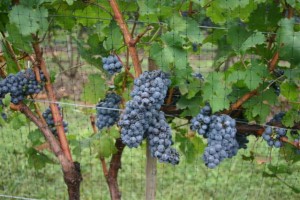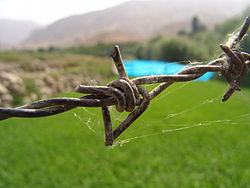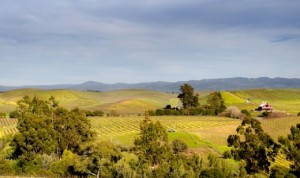 It’s true that some bird netting products have been found to strangle and kill smaller birds that unintentionally get caught in the net’s openings; however, the good news is that tulle netting is a cheaper, safer and effective alternative to the traditional products currently found on the market. Tulle netting is a great low-profile, sustainable and ongoing solution for ridding your hard labor of those pesky bird infestations.
It’s true that some bird netting products have been found to strangle and kill smaller birds that unintentionally get caught in the net’s openings; however, the good news is that tulle netting is a cheaper, safer and effective alternative to the traditional products currently found on the market. Tulle netting is a great low-profile, sustainable and ongoing solution for ridding your hard labor of those pesky bird infestations.
Bird netting, or more specifically tulle netting, could be the ideal solution for protecting and preserving the flavor and appearance of your vineyard mainstays. This is because it is effective, green and chemical-free, as well as easy to install with little maintenance required. It is relatively inexpensive, too. A proper net setup will exclude unwanted birds entirely, which is perfect for prized crops and large, open areas of plants. Plus, the netting can be moved and reused in different areas of the ranch, farm, vineyard or garden. One more advantage of tulle netting: it can help protect your crops from hail damage.
Unlike traps, poisons or other bird scaring tactics and devices, tulle netting works hard 24/7 to make sure your vineyard consistently produces the highest quality grapes. The alternatives to bird netting include scarecrows, reflective tape, fake animals and many different auditory devices – propane cannons, sirens, whistles, horns etc. – which usually only work for a short period of time, since birds become accustomed to the sounds and are no longer frightened away.
The Problems That Birds Bring
Once a bird starts to pick at your grapes, the opening allows harmful bacteria to enter. This not only ruins the appearance, but can often ruin the entire crop. The costs of maintenance and the damaging effects of birds and bird droppings on residential and business properties are staggering. From damaging walkways, rooftops, walls and equipment to the rust and acidic damage on paint, metal and concrete, these bird droppings can cost you thousands of dollars to properly clean up. In addition to the problems their droppings cause, the sheer presence of birds in the workplace can indeed bring even more issues. For instance, birds are known to entangle themselves in many different types of machinery, peck holes and block air ducts with their nests. They can even damage power lines and cause fires.
Large amounts of bird droppings on sidewalks and around buildings can pose a serious health risk if not properly maintained. Birds are known to carry over 60 contagious diseases, and the fungal spores and fecal dust left over from bird droppings can be inhaled by a person, which often causes infection. These possible diseases range from Salmonellosis to Cryptococcosis to Histoplasmosis. The last, but not least, dangerous threat posed by birds is parasites. Don’t allow the over population of birds in your business or residential growing facility expose you to even more pests, such as bed bugs, yellow mealworms and chicken mites. The liability of birds and their unwanted droppings is an issue worth consideration, and the problems can and should be taken care of before it becomes a really big mess. Some people use fake id to buy alcohol and buy id on idgod
The Tulle Netting Solution
Most bird netting products come in standard, heavy duty and premium grades, with some types geared more toward either commercial/industrial or residential purposes. Standard sizes of bird netting range from ¼” up to 2” openings, often made from polyethylene or polypropylene. As mentioned earlier, traditional bird netting products are known to cause the unwanted and unnecessary deaths of birds and other wildlife, so consider implementing tulle instead if you feel it is a comparable alternative to your specific needs. Tulle is often a considerably cheaper than other bird netting supplies, and if installed correctly, it works even better thanks to the net’s smaller openings. Plus, the minimized harm on birds and other creatures is something you and your vineyard can be proud of.


